The Prayer Plant belongs to the family Marantaceae, also known as “Maranta leuconeura”.
It is a native plant to the tropical rainforest regions in the Western Hemisphere (Central and South America).
You can explore here for all things related to indoor and outdoor planting and propagation of Prayer Plant. We are here to guide you in plantation and selection of right plants for you.
Some Basic Features of Prayer Plant
- This plant is especially known for its nyctinastic movements. Its leaves stay flat during the daytime and tend to fold together at night, looking like a pair of praying hands, which makes this plant distinguishable from others.
- The graceful movement of this plant allows to capture the rays of the sun optimally during different times of day (or night).
- It is very popular as a houseplant and can also be planted indoors during any time of the year.
- These plants thrive in low-light conditions (when they do not receive direct sunlight) and prefer high humidity and moist soil that allows water to drain at a moderate rate, without pooling or puddling.
- They are considered non-toxic to cats, dogs, or humans, but it is still important to avoid ingesting large amounts of any houseplant.
- New leaves appear as a rolled tube.The underlying of the leaves are gray-green to purple-green.
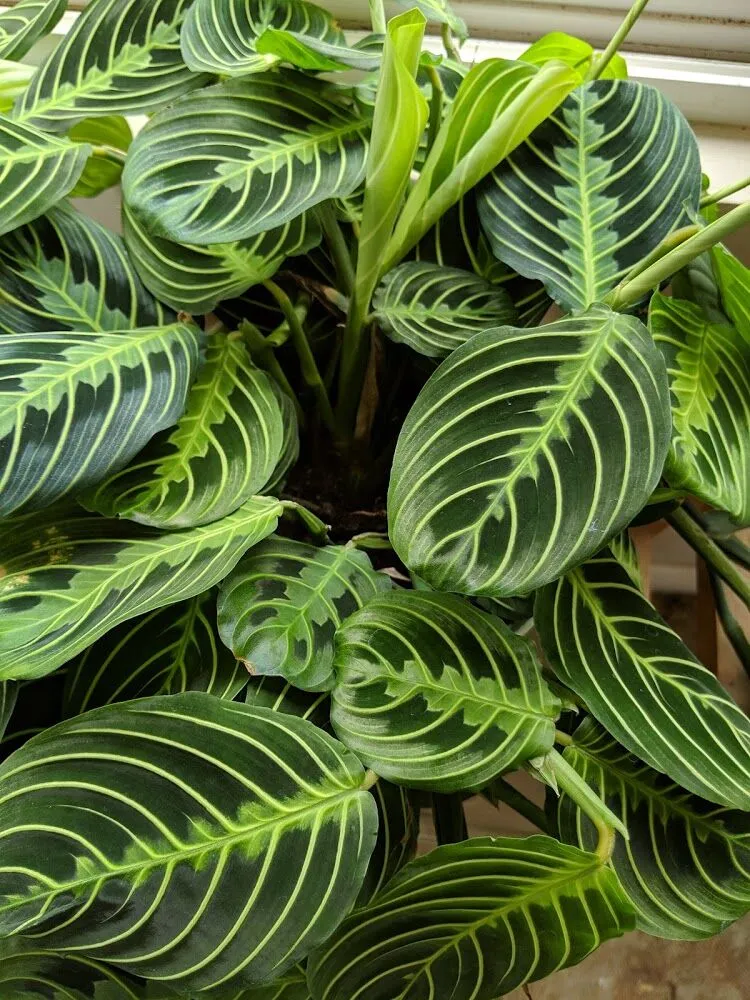
Care and Propagation Guide
| Some Essential Facts of Prayer Plant Botanical Name: Maranta leuconeura Origin: Native to tropical rainforests of Central America, South America and West Indies. Some Common Names of Prayer Plant: Cathedral windows, Herringbone plant, Calatheas, Red-Veined Prayer Plant, Red-Veined Prayer Plant Care Level: Easy to moderate, generally considered easy to grow Foliage: Wide oval-shaped leaves 4 to 8 inches long have distinct markings or stripes Colors: The base colouring occurs in different shades blue-green, green, or yellow-green. Veining can be red, contrasting green or cream Size: 6 to 12 inches(30 cm) tall and wide, trailing to 18 inches Growth rate: Slower in the fall/winter, but grow fast in summer. Flowers: Small or white orchid-like flowers appear in spring. Flowers are insignificant, but those kept indoors rarely bloom. |
In This Article
Tips for Beginners :
Location: where to put it
Direct sunlight burn their delicate leaves, so avoid putting it direct into sunlight. If light is too low, the plant may lose its vibrant colours, it should be medium indirect sunlight.
Type of Soil:
Choose a well-draining, fertile and acidic soil. Add some fibrous natural material (called peat moss), perlite( which speeds up the germination and rooting), and compost (ingredients used as plant fertilizer and to improve soil’s biological, physical, and chemical properties). Also make sure proper drainage to prevent any plant disease like root rot.
Watering:
It can be bit tricky to water these plants, as they do not like standing water. Give your prayer plant a good watering twice a week during the summer and spring, and once a week during the winter and fall. Use lukewarm, filtered water to avoid leaf browning from minerals, also they flourish or grow vigorously in a humid environment.
What you need to care for:
These plants need more frequently moist soil or considerable humidity otherwise their leaves may fall or tips and edges of leaves get brown. Infact moisture is the key to success with these plants.
Types and Color of Prayer Plant
There are many different kinds of Prayer plants, around from 40-50 species or types of prayer plant. But the most commonly found in homes and gardens are the Red Maranta, Lemon Lime Maranta, and the Kim Maranta. Other types of this plants are black prayer plant, Maranta Leuconeura, and green Marantas. As people love to have them. Because they have striking patterns with veins in more eye-catching contrasting colours.
Here you can explore about some most common types of Prayer Plants found in nurseries.
1.Black Prayer Plant:
(M. leuconeura var. massangeana)
This plant is commonly cultivated as a houseplant, it has a darker leaf background with some silver lining along the midrib and white leafy veins.
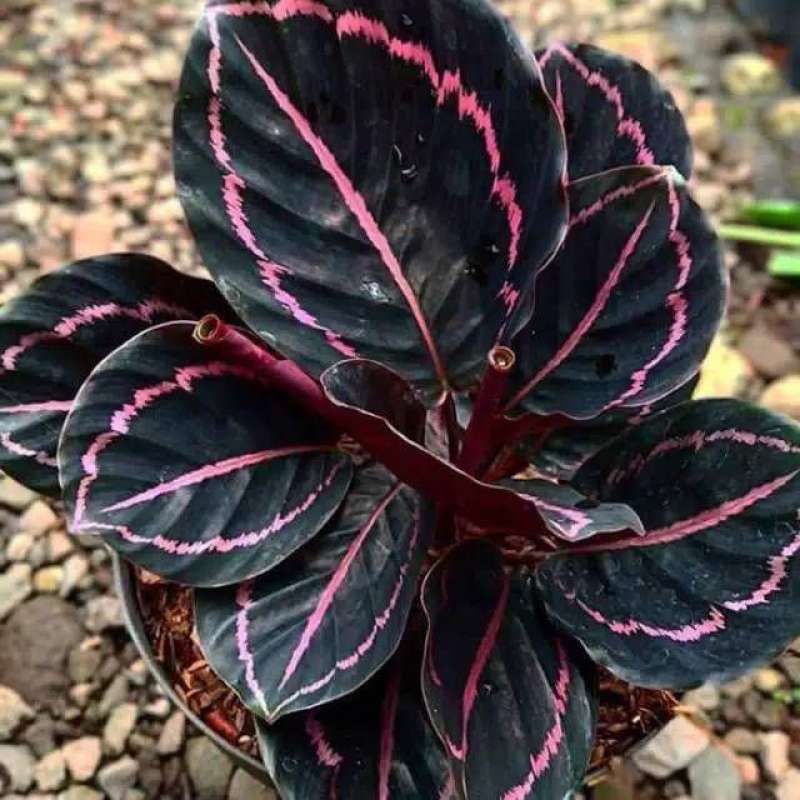
How to care for:
- Airflow should be Warm and Humid
- Fertilize these plant on regular basis
- Soil should be nutrient-rich
- Properly well-draining
- Regularly maintenance
- Avoid placing on direct sunlight
- ideal temperature for these plants: 60-80º F
- Placing: place them in front of a northern-facing or eastern window is most favourable.
2. Maranta Leuconeura
(‘Rabbit’s Tracks Maranta):
This is one kind of prayer plant,that belong to a family Marantaceae and It gets its common name from one of its feature that it look like praying hands at night.
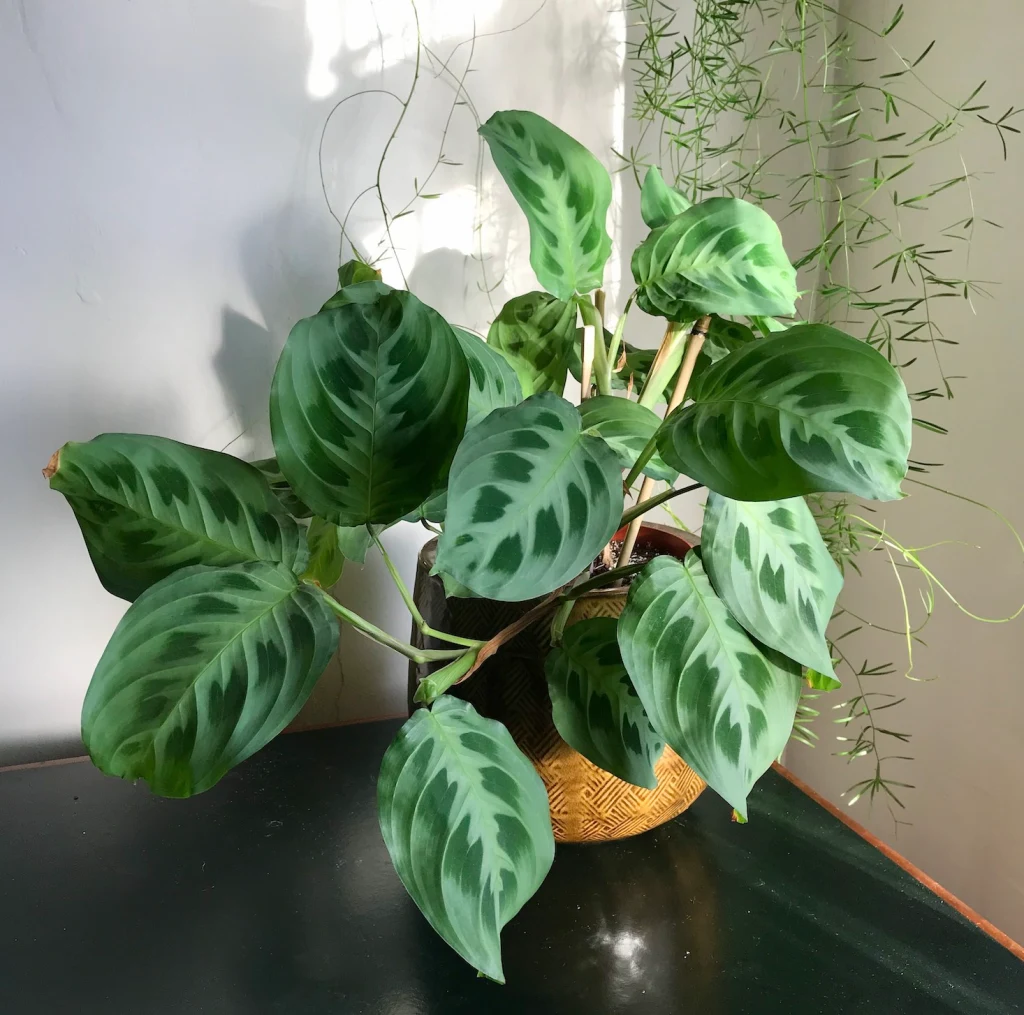
How to Care for:
- These plants have sprawling growth that grows along the ground, and in our homes, they can look quite clumsy as they grow and spread. you need to repot those plants or move them from one place to another, or disrupt their normal planty lives.
- Preferable conditions include well-draining, fertilization regulerly
- Humidity should be high
- Bright to medium indirect sun light exposure
- and soil should be nutrient rich foe growing of these plants.
3. Green Maranta:
(M leuconeura var. erythroneura):
This variety looks almost similer to the red colored maranta, as its veins are different than tri-colored maranta. It has white or lime green veins rather than red veins.
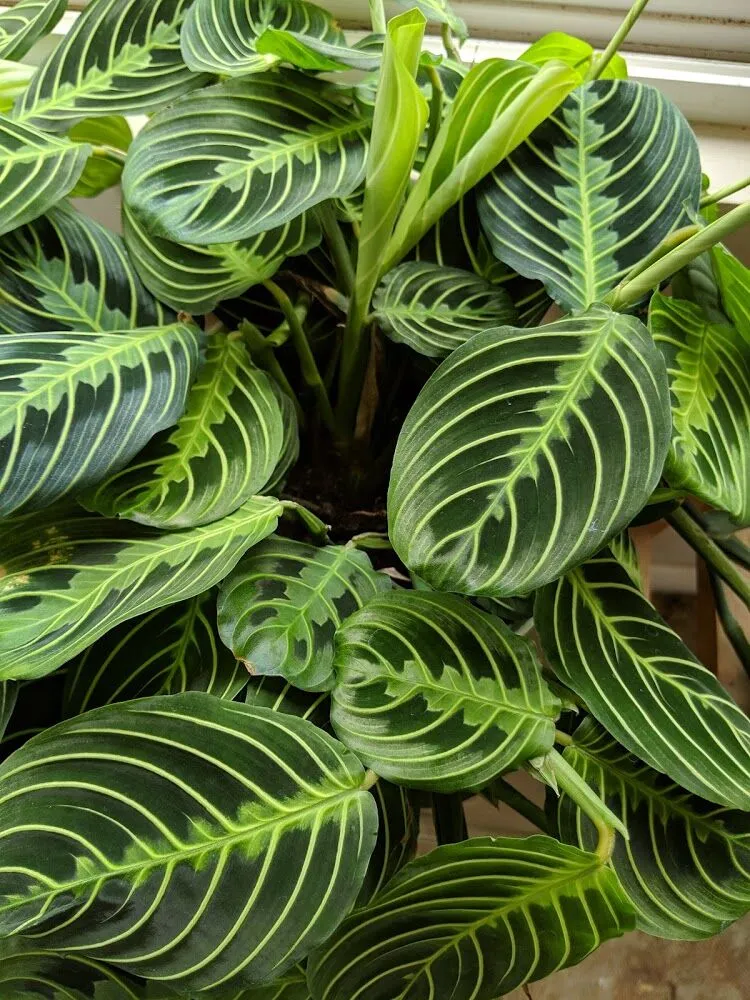
How to Care:
- keeping the soil moist
- Humid environment
- Need balanced fertiliser
- Give less water in winter
4.Tri-Colored /Red Veined Prayer Plant:
(M. leuconeura var. erythrophylla):
This variety looks almost similer to the red colored maranta, as its veins are different than tri-colored maranta. It has white or lime green veins rather than red veins.

How to Care:
- Temperature should be b/w 68° – 85°F. :
- Need to use all-purpose fertilizer for indoor plants.
- These plant prefer above-average humidity.
- Need bright but indirect sunlight for better growth.




THINGS TO KNOW ABOUT:
- Common Name: prayer plant
- Type: Herbaceous perennial
- Native Range: Brazil
- Zone: 11 to 12
- Favourable conditions: winters
- Height: 1.00 to 1.50 feet
- Bloom Time: May to July
- Bloom Description: White
- Sun: medium to bright/indirect sunlight
- Water: Medium
- Suggested Use: Ground Cover
- Leaf: Colorful, Evergreen, Colorful
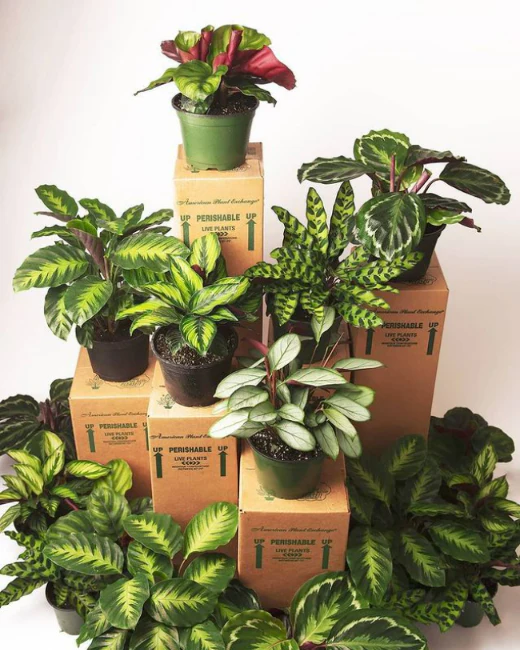
Propagation of Prayer Plant
- Marantas need particular care in order to flourish.
- They need bright but indirect light, and a consistently warm spot – keep them out of direct sunshine.
- Keep the soil moist from spring to autumn, and misting the leaves daily for providing some humidity.
- Another key point is that, these plants need to get hyderated because these are sensitive to water shortage.
For more information you can check this video link below:
Guideline for Propagation:
There are only a few steps to propagating these tropical plants:
These plants have well-loved stripy leaves, these are easy to care and simple maintenance requirements make them favourite of houseplant lovers and are simple to propagate.
These plants can be propagate by simply following some steps. Usually these can be propagate by root division method, take a stem cutting then rooting it in water or you can rooting a stem cutting in soil, depend on your own choice.
When to propagate a prayer plant :
The best time to propagation of these plants is early spring. It is a time when these plants wakes up and enters into expansion phase. Environmental factors such as sun light, temperature and humidity are also more optimal during this time of the year, which boost the propagation process more effectively.

Simple Steps for Propagation
The best time to root division is early spring, buy you can also do this in summer as well. You need to identify that each division must have healthy leaves, roots and stems to grow and survive on its own.
There can be three simple method for the propagation of these plants:
- Root division method
- Propagation in soil
- Propagation in water
Root Division Method
You need to gently remove the plant from its pot and shake it well to remove the excessive soil from the plant, you need to identify between the main plant and children plant that have sprung from the main plant because each have independent different stems and root sections.
- Take a sharp cutter and separate each section from the main plant.
- Take a well draining pots mixed with soil in it and re-pot the dividing sections into these pots.
- Water these plants thoroughly.
- You need to place them in bright but indirect sun exposure and leave them to grow themselves in new pots.
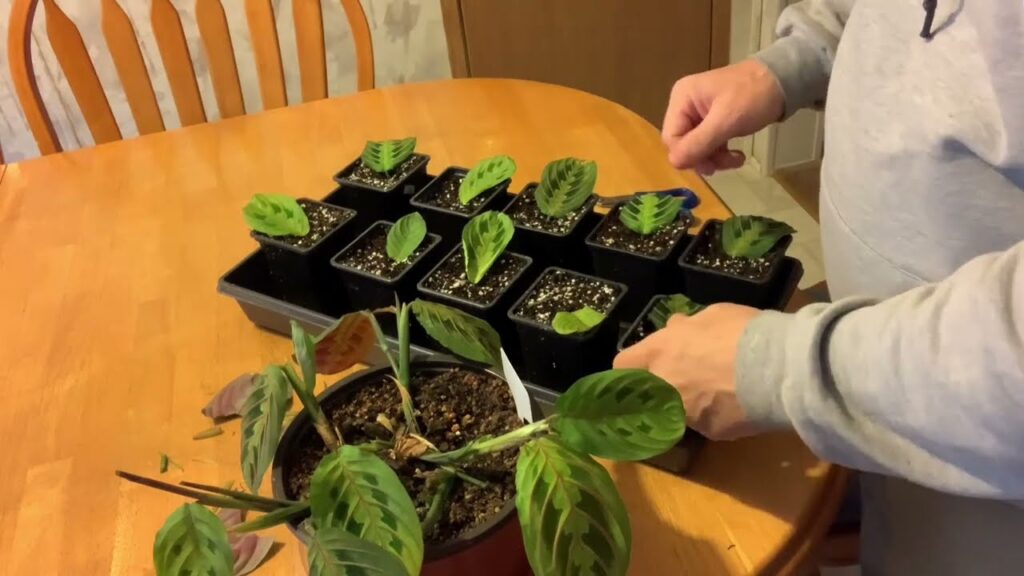
Propagation in Soil
This is another way of growing new prayer plants from an existing one. In this case you need to cut a stem below a node around 1 to 2 cm long by using a sharp cutter or Scissor.
- For speed up the roots growth all you need to put the bottom side of the stem into the rooting hormone.
- Take a pot with well-draining nutrient rich soil, make it in two parts peat moss, one part biochar or perlite and one part compost. After that place the cutting stem in it.
- Make sure for humid environment or cover the plant with transparent plastic wrap.
- To keep the soil moist, water the plant regularly and moderately.
- The sun exposure should be indirect and bright to growing well.
- The roots will start growing in a few weeks, you need to check it very gently when new roots come out, remove the plastic cover.
- keep an eye to look out new growing plants.
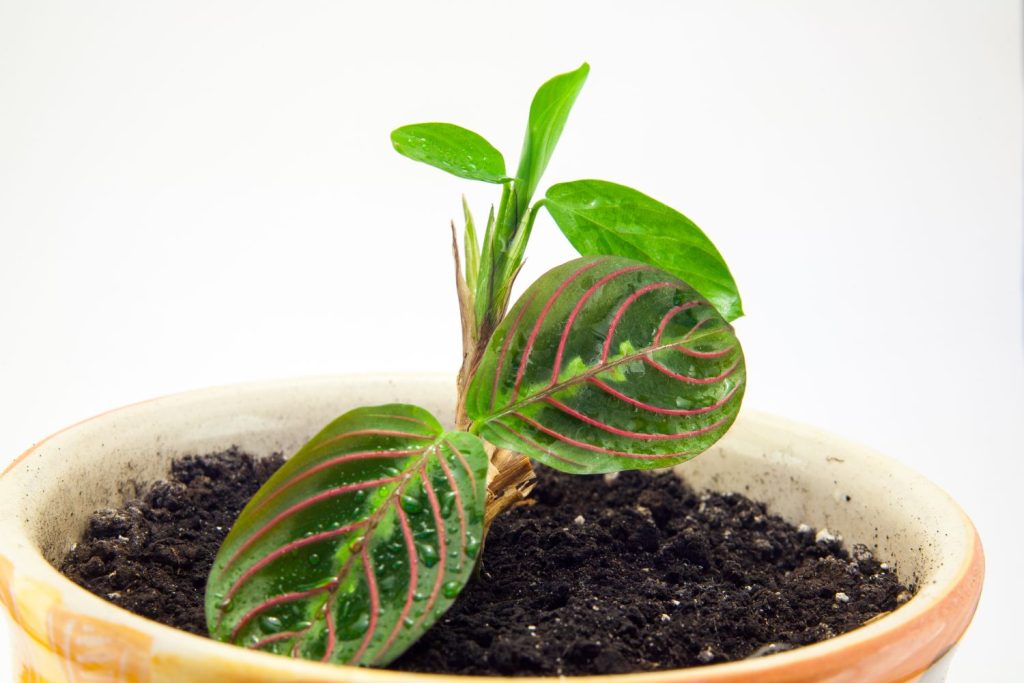
Propagation in Water
The propagation of prayer plant in water is quite easy. There are simple steps to be followed:
- You need to cut a stem with a sharp knife or cutter, from the parent plant below a node about one to two inches.
- Take a pot filled with normal water, put this cutting stem into water, leaves should be out-site from the pot.
- Observe this water pot for some days, there should be bright but indirect sunlight.
- After a few weeks, the roots will start growing.
- you need to change the water once in a week.
- when the roots are about one to two inches long, the prayer plant is ready to shift into the soil, you can transfer this stem into soil pot. The pot should be filled with peat moss, vermiculite, perlite, and compost, a well-draining mixture.
- keep the soil moist, water regularly.
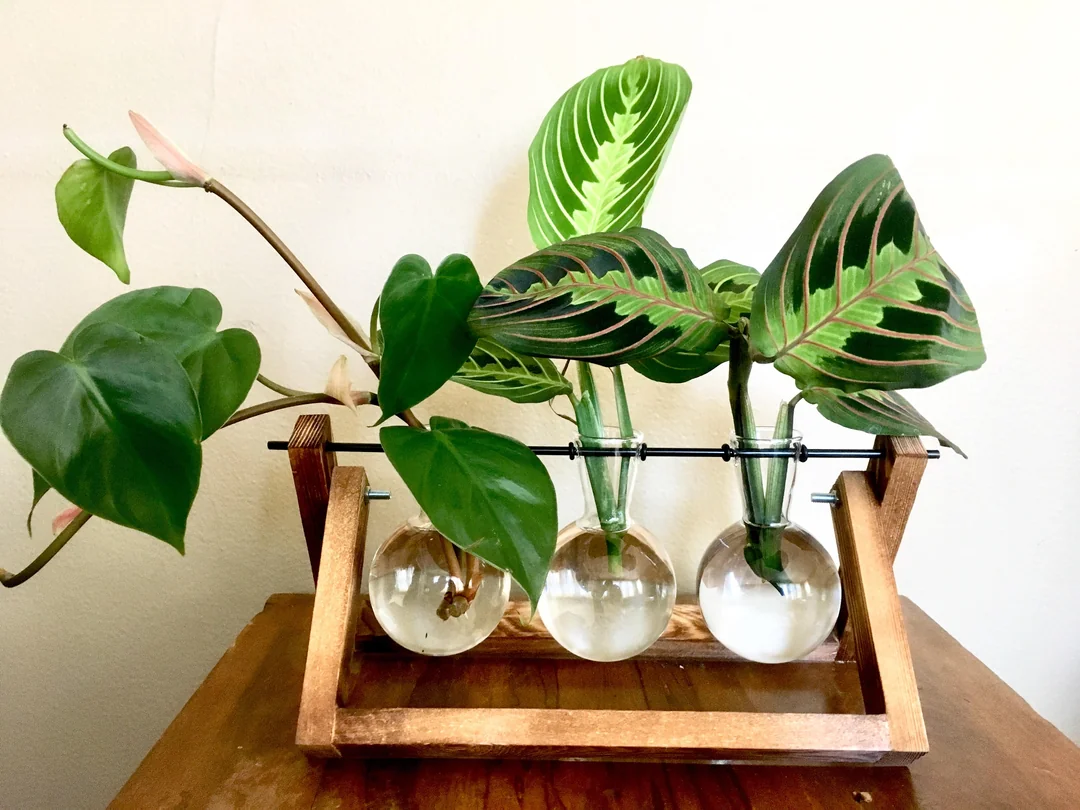
Common Problems and Solutions
The plant is known shiningly as the Prayer Plant – and it’s not very easy to grow one.
Here is a list of its problems along with their solutions:
1. Yellow leaves:
- Cause: The leaves becomes yellow because of not enough drainage or too much water.
- Solution: Ensure there are adequate drainage holes in the bottom of the pot. The top soil will dry slightly, so wait a little bit before watering.
2. Brown edges or leaf tips:
- Cause: This is because of less humidity, or too hot or too cold tap water given the plants, also because of excessive use of pesticides.
- Solution: You not only need to increase humidity but also use distilled or filtered water. Try to reduce the amount of fertilizer, or mix it with more water.
3. Drooping Leaves:
- Cause: Overwatering, under-watering, or extreme temperatures.
- Solution: Monitor soil moisture frequently. Maintain stable temperature ranges (65-75°F or 18-24°C). Preclude cold drafts or direct heat sources.
4. Fungal Spots on Leaves:
- Cause: Overwatering or poor air circulation.
- Solution: Ensure good circulation, Keep water at the base and try not to wet the leaves.
5. Leaves Curling:
- Cause: Low humidity, under-watering or too much light.
- Solution: When the top inch of soil feels dry, water the plant. Increase humidity with humidifier or a pebble tray. Try to keep it in bright but indirect sun light.
6. Leaves Losing Their Patterns:
- Cause: The plant is not getting sufficient light.
- Solution: The sunlight should be direct but not too intense. Don’t leave it directly in sunlight since it will scorch the leaves.
7. Spider Mites, Aphids, Mealybugs:
- Cause: Unhealthy plants and dry environmental conditions.
- Solution: Wipe leaves using a cloth with insecticidal soap or neem oil. Raise humidity levels in order to repel pests.
FAQs about Prayer Plant
How often should I need to water my house plants?
Watering houseplants is tricky because some prefer soil to be moist all the time, while others like it on the dry side. Also, each home is different, and the watering needs fluctuate from season to season, so it’s a sensitive balance to strike.
Can Prayer Plants grow indoors?
Yes—in fact, prayer plants will often thrive most successfully indoors. As it is easier to maintain the humidity and warm conditions they require,These conditions becomes sometimes hard to achieve outdoors in many parts of the country.
Can Prayer Plants bloom indoor?
Yes, prayer plants can bloom when grown indoors under the proper and ideal conditions. Healthy and mature prayer plants will produce delicate white and pinkish-purple flowers during the spring and summer. Consider this a wonderful indication that your plant is content with its growing conditions.
How do Prayer Plants grow Fastly?
Prayer plants are typically slow growers and usually reach a maximum height of 12 inches. Although when they get mature, they may spread wider.
